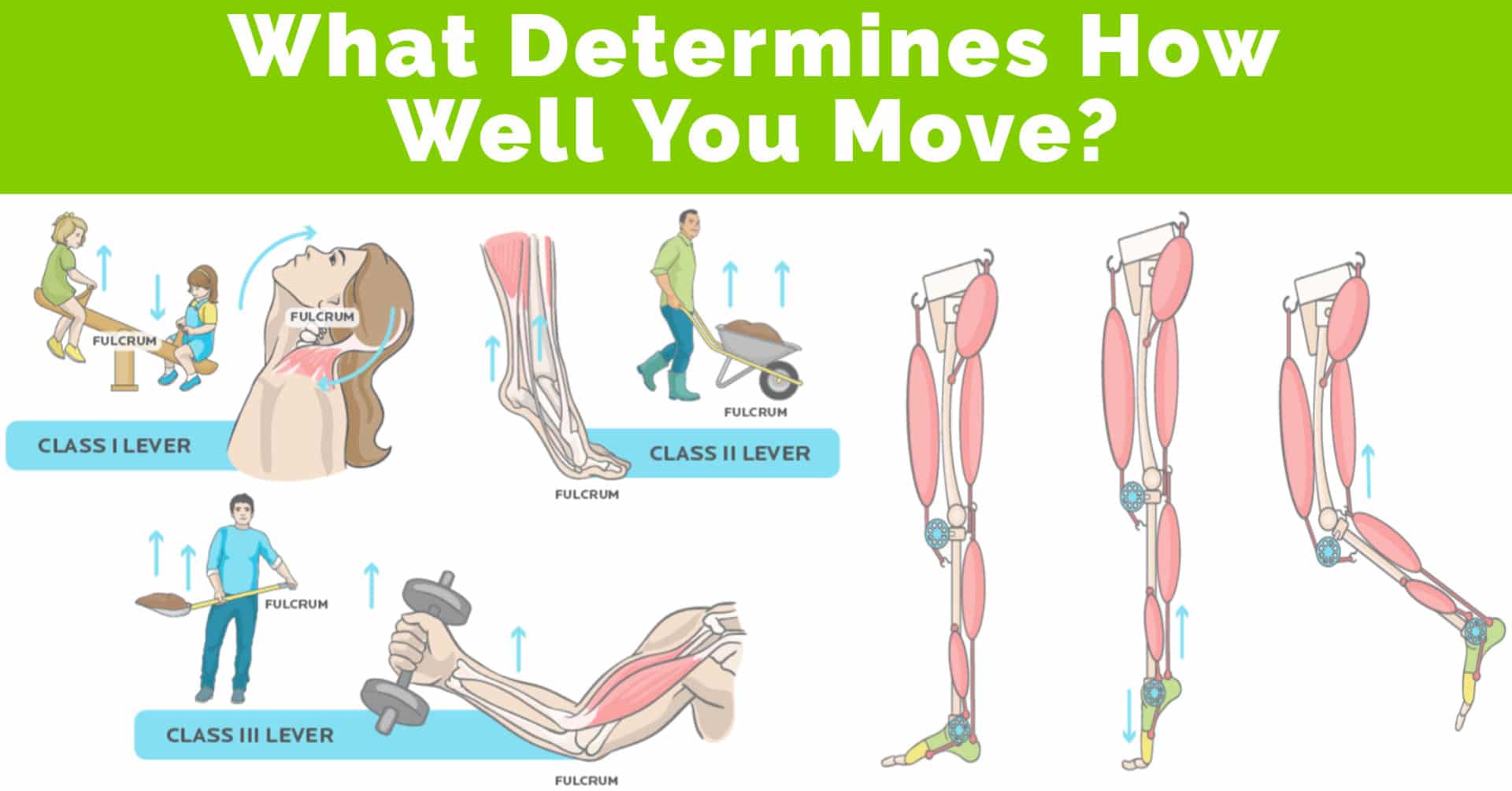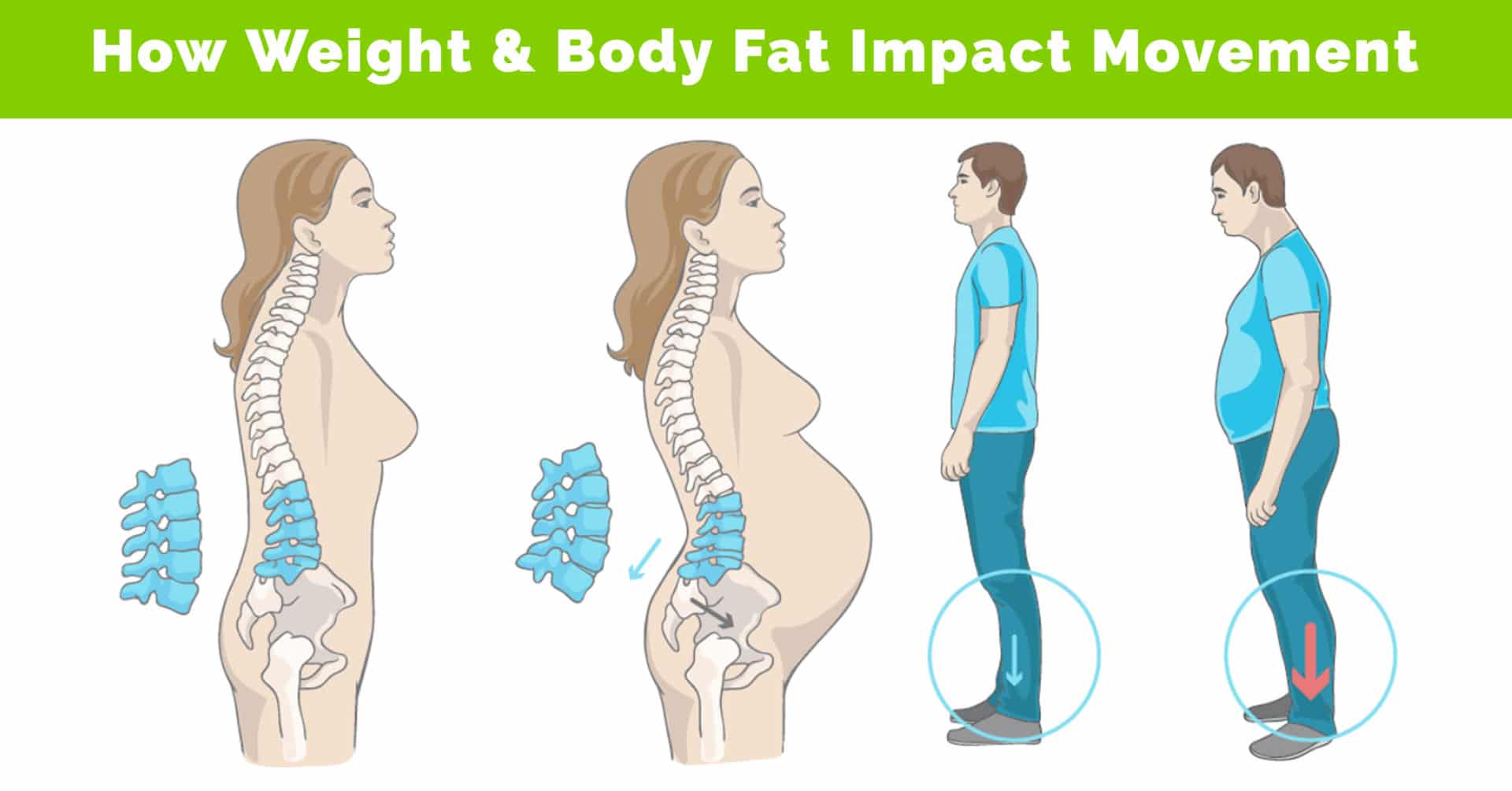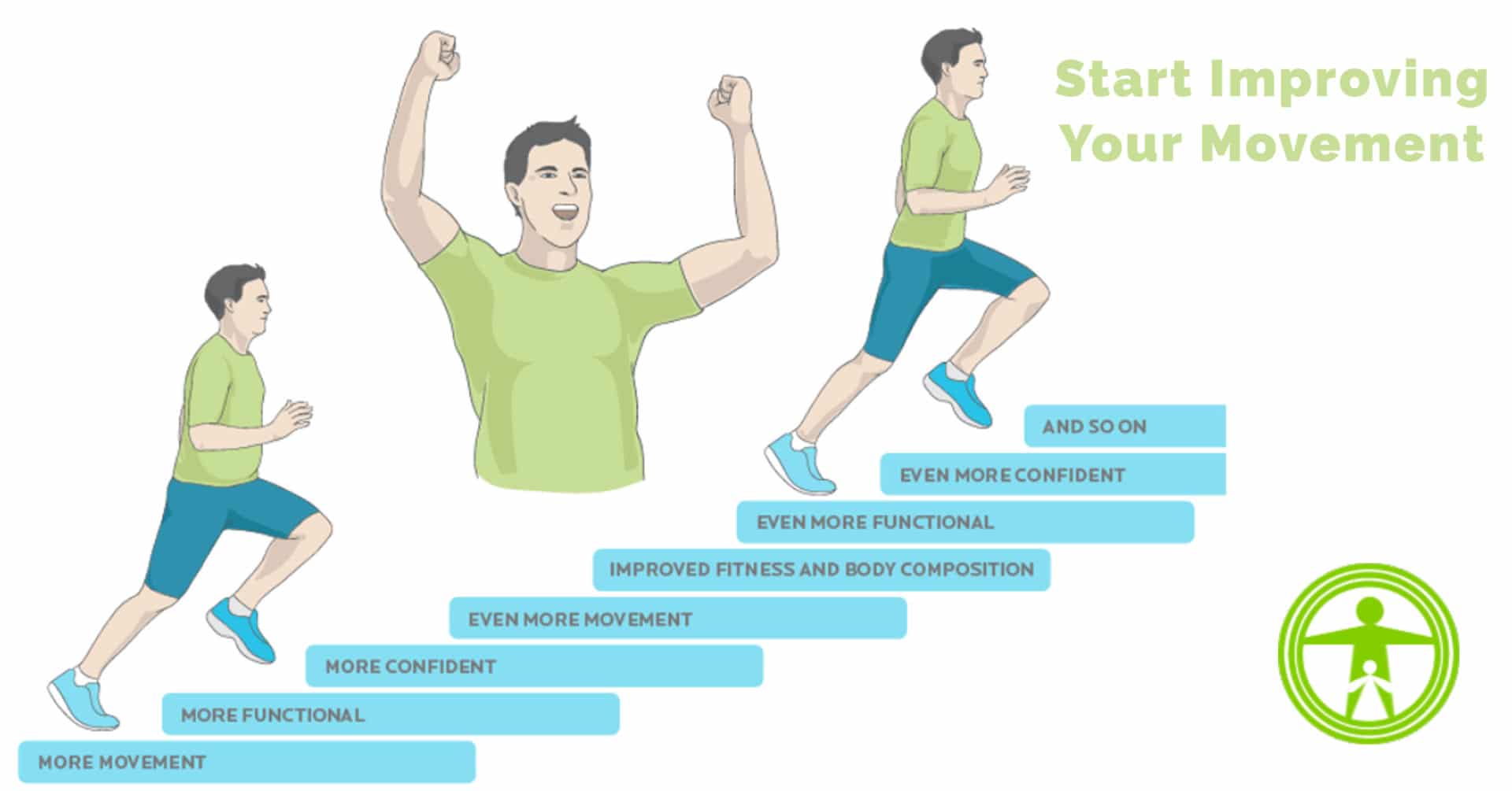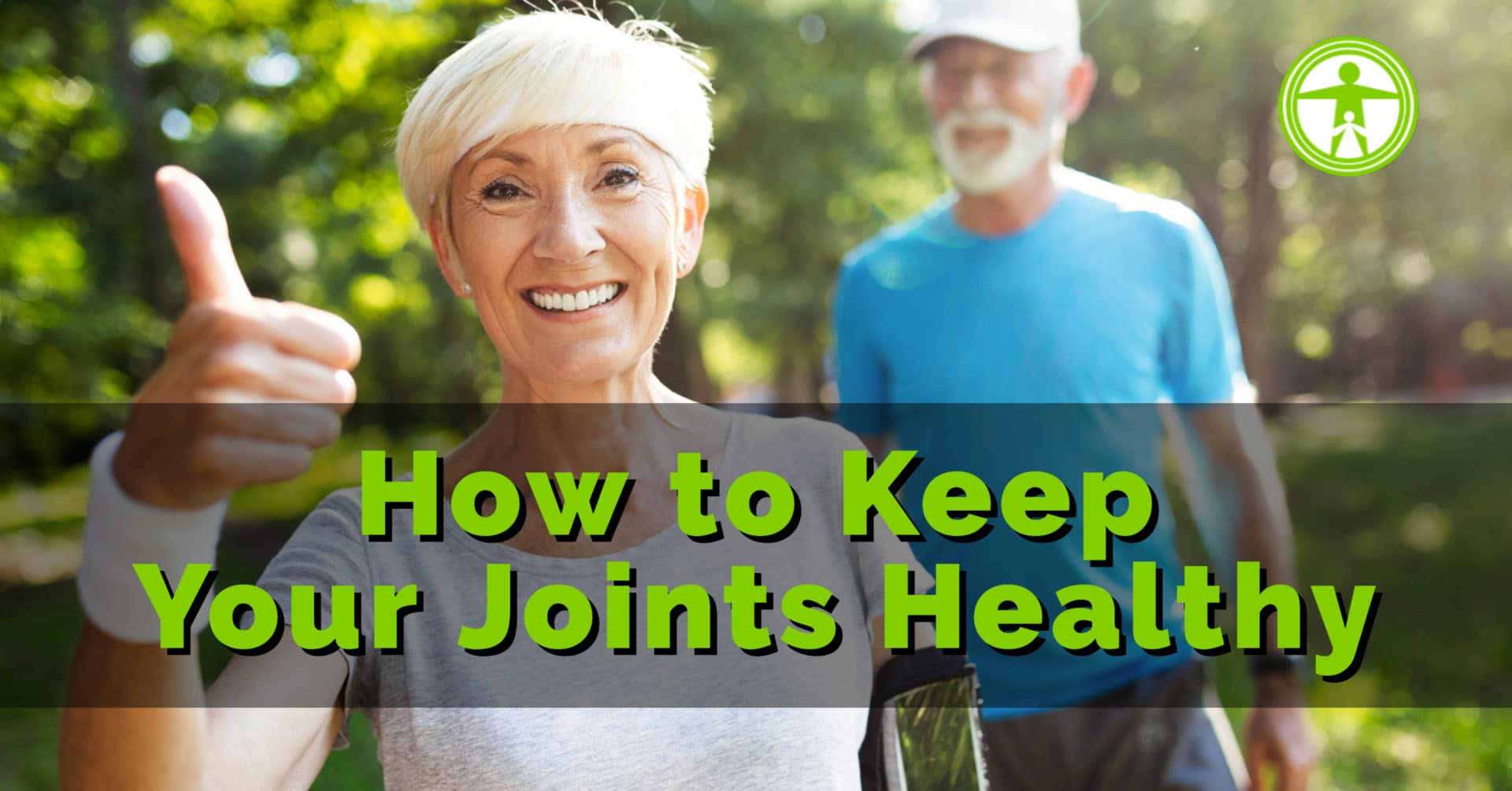How to Keep Your Joints Healthy
Most people think about healthy movement as the act of exercising.
This includes cardio, crunches, abs and weight lifting. But moving is so much more than looking good on the beach.
Movement translates to improved brain function and thinking, stronger relationships and ultimately living your life's purpose.
In my years as a Doctor of Chiropractic, health and wellness coach, I’ve discovered that developing a body that moves well is an important pillar when it comes to being capable, confident, and free.
It’s no secret: Human life has become structured in a way that makes it very easy to avoid movement.
We sit in cars on the way to work. At work we sit at our desks for much of the day. Then we come home and sit down to relax.
This is why creaky knees, stiff backs, and dumb sayings like “I'm just getting old!” have become the norm.
Not being able to move well is a sign that you aren’t as healthy as you could be; but the quality and quantity of your daily movement — your strength and agility — are stronger markers for something much more important.
In my line of work, you watch a lot of people transition from poor movement to agile, healthy individuals. They notice they’re:
- more energetic and young-feeling,
- able to do things they’ve been putting off for years,
- empowered,
- proud of their lifestyle,
- and free from many of the anxieties and limitations that held them back for so long.
They’re happier, but not just because they wanted look better. They’re happier because their bodies now work like they’re supposed to. They can now do things they know they ought to be able to do.
As humans, we move our bodies to express our wants, needs, emotions, thoughts, and ideas.
This means that how well we move — and how much we move — ultimately determines how well we engage with the rest of the world and establish our larger purpose in life.
If you move well, you also think, feel, and live well.
It’s proven that healthy movement helps us:
- Feel well, physically and emotionally
- Function productively
- Think, learn, and remember
- Interact with the world
- Communicate and express ourselves
- Connect and build relationships with others

What Factors Determine How Well You Move?
While there are universal human movement patterns (walking, squatting, lunging, pulling, pushing, etc.), our specific movement patterns are unique to us, and come down to individual bioengineering.
Your body amounts to a sophisticated pile of interconnected levers:
- Muscles are attached to bones with tendons.
- These tendons connect to two (or more) bones across a joint.
- When a muscle contracts, the tendons pull on the bone.
- That contraction and pull causes the joint to flex (bend) or extend (straighten).
And how your joints move is really determined by the size, shape and position of all of those parts, along with anything that adds weight, like body fat.
- Tall people (with longer bones) may find it harder to bench press, squat and deadlift the same amount as a short person.
- Short people may not run, swim or climb as fast as tall people.
- If you're bottom heavy, you may have better balance.
If you have extra weight in the middle (or you're pregnant), you are more likely to have back pain because the extra weight pulls downward on your lower back.
When the lower back is pulled downward, it affects all the joints below (pelvis, knee and ankle). And it also works in the opposite direction, where poor ankle or knee movement can impact the lower back.
- If you have wider shoulders, then you have a longer lever in your arms, which means you may potentially throw, pull or swim better.
- If you have longer legs, then you have a longer stride, which means you'll potentially run faster.
All that said, what's important to understand here is that while movement patterns are impacted by how we are built, it doesn't mean you are a victim.

Too Much Body Fat and Weight Impact Your Movement
If you have more body fat or weight than you're supposed to, especially with a combination of not having enough muscle to move your engine, you're going to have problems.
At a healthy weight, your center of mass is in front of your ankle joints when you stand upright.
The more mass you have, especially if you have extra weight in front, the harder your lower legs and feet have to work to keep you from tipping forward.
This puts additional torque (rotational force) on ankle joints.
Once you start walking — which is, essentially, a controlled forward fall — you have to work even harder to compensate.
Any unstable or changing surface (stairs, ice, fluffy carpet, a wet floor), requires your lower joints to adjust powerfully and almost instantaneously — literally millisecond to millisecond.
As a result, obese children and adults fall more often.
Human bodies are amazingly adaptable and clever, but physics is running the show.
The good news is that this is generally reversible.
No matter where you’re starting, the more you move, the better your body will function.
When you move:
- your muscles contract;
- you load your connective tissues and bones;
- you increase your respiration and circulation; and
- you release particular hormones and cell signals.
All of these (and a variety of other physiological processes) tell your body to use its raw materials and the food you eat in certain ways.
For instance, movement tells your body:
- to retrieve stored energy (e.g. fat or glucose) and use it;
- to store any extra energy in muscles, or use it for repair, rather than storing it as fat;
- to strengthen tissues such as muscles, tendons, ligaments, and bones; and
- to clear out accumulated waste products.
And improved body functions ensure you’ll be able to move well and:
- climb stairs or hills
- step over obstacles
- carry groceries
- stand up from sitting down, or get up from the floor
- grasp and hold objects like a hammer
- pull or drag things like a heavy door or garbage can
- walk an excitable dog
The more we can do confidently and capably, the fitter we’ll be. Even better, that means we’ll do more. That leads to more fitness. And this virtuous cycle continues.

How To Start Moving Better
1. Pay attention to how it feels when you move.
“Pay Attention” to your body:
- When you walk or run: How long is your stride? Do your legs swing freely? Do your hips feel tight or loose? What are your arms doing? Where are you looking?
- When you stand: How does your weight shift gently as you stand? What does that feel like in your feet or lower legs?
- When you sit: Where is your head? Can you feel the pressure of the seat on your back or bottom?
- When you work out: Can you feel the muscles working? What happens if you try to do a fast movement (like a jump or kick) slowly, and vice versa?
2. Ask yourself if you're moving as well as you could.
- Do you feel confident and capable… are you “ninja-ready” for anything?
- Do you have any physical limitations? Do you avoid certain activities because of them?
- When was the last time you tried learning a new movement skill?
3. Think about ways to improve movement.
If you’re working out a certain way because you think you “should”, but it’s not fitting your body well, consider other options.
Or maybe your current workout is going great and yet there's other possibilities for you to consider.
A few ideas might include:
- Rowing
- Cycling
- Archery
- Ballroom Dancing
- Yoga
- Tennis
- Hiking
Remember: You don’t have to “work out” or “exercise” to move. And you don’t need to revamp your physical activity overnight, either.



